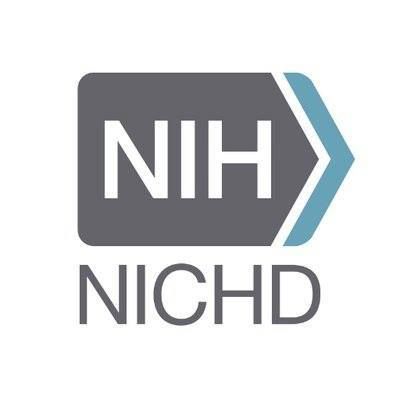预约演示
更新于:2025-05-07
Adenosine receptor x ADORA2 x A1R
更新于:2025-05-07
基本信息
关联
5
项与 Adenosine receptor x ADORA2 x A1R 相关的药物作用机制 A1R拮抗剂 [+1] |
非在研适应症- |
最高研发阶段批准上市 |
首次获批国家/地区 美国 |
首次获批日期1999-09-21 |
作用机制 A1R激动剂 [+1] |
在研机构- |
在研适应症- |
非在研适应症 |
最高研发阶段无进展 |
首次获批国家/地区- |
首次获批日期1800-01-20 |
作用机制 A1R激动剂 [+1] |
在研机构- |
原研机构 |
在研适应症- |
非在研适应症 |
最高研发阶段无进展 |
首次获批国家/地区- |
首次获批日期1800-01-20 |
200
项与 Adenosine receptor x ADORA2 x A1R 相关的临床试验NCT06638372
Caffeinated Chewing Gum on Special Forces Performance: a Cross-over Study
The purpose of this project is to investigate the effects of caffeine chewing gum on the cognitive functions and special operations capabilities of special forces.
开始日期2025-07-01 |
申办/合作机构- |
NCT06518603
Randomized Controlled Trial of Caffeine Citrate in Preterm Infants at Risk of Apnea in Zambia
The goal of this clinical trial is to learn if caffeine citrate prevents apneic events that result in sick visits in moderately preterm infants after discharge from the hospital. It will also learn if the use of caffeine leads to better developmental outcomes at 12 months of age.
Our research questions are:
1. Does continued treatment of moderately preterm newborns with caffeine citrate after hospital discharge prevent or decrease apneic events that result in sick visits?
2. Will the continued use of caffeine citrate lead to improved developmental outcomes among infants at 12 months of age?
Researchers will compare caffeine citrate to a placebo (a look-alike substance that contains no drug) to see if caffeine citrate prevents apneic spells which result in healthcare visits.
Parents of participants will:
1. Administer caffeine citrate 20mg/kg/day or a placebo (equivalent volume of sterile water) orally every day for up to 28 days after hospital discharge
2. Keep a diary of symptoms and any apneic events
3. Check in with researchers via telephone call once a week
4. Return to clinic for infant physical examination at 28 days
5. Return to the clinic for infant physical examination at 2 months
5. Return to clinic for infant neurodevelopmental examination with Ages and Stages Questionnaire at 12 months of age
Our research questions are:
1. Does continued treatment of moderately preterm newborns with caffeine citrate after hospital discharge prevent or decrease apneic events that result in sick visits?
2. Will the continued use of caffeine citrate lead to improved developmental outcomes among infants at 12 months of age?
Researchers will compare caffeine citrate to a placebo (a look-alike substance that contains no drug) to see if caffeine citrate prevents apneic spells which result in healthcare visits.
Parents of participants will:
1. Administer caffeine citrate 20mg/kg/day or a placebo (equivalent volume of sterile water) orally every day for up to 28 days after hospital discharge
2. Keep a diary of symptoms and any apneic events
3. Check in with researchers via telephone call once a week
4. Return to clinic for infant physical examination at 28 days
5. Return to the clinic for infant physical examination at 2 months
5. Return to clinic for infant neurodevelopmental examination with Ages and Stages Questionnaire at 12 months of age
开始日期2025-06-01 |
申办/合作机构 |
NCT06855108
Caffeine for Hypoxic Ischemic Encephalopathy (CHIME Trial)
CHIME is a randomized, parallel-arm, double-blind, placebo-controlled trial focused on infants with hypoxic ischemic encephalopathy (HIE). The trial will recruit neonates who are diagnosed with HIE within six hours after birth based on physiologic criteria (acidosis noted on an umbilical cord or early [<1 hour] postnatal blood sample) and neurologic criteria (modified Sarnat exam consistent with encephalopathy). Following informed consent, and by six hours after birth, neonates with HIE will be randomized to one of two treatment arms and subsequently receive one 20 mg/kg dose of oral caffeine followed by two additional 10 mg/kg doses at 24-hour intervals or placebo of the same regimen (three total doses).
The goal of this clinical trial is to compare the incidence of all-cause mortality OR moderate to severe neurodevelopmental impairment (NDI) at 18-22 months between neonates with HIE who are randomized to oral caffeine or placebo. Our hypothesis is that neonates with HIE who receive oral caffeine will have 10% lower incidence of all-cause mortality or moderate to severe NDI at 18-22 months compared to placebo.
The goal of this clinical trial is to compare the incidence of all-cause mortality OR moderate to severe neurodevelopmental impairment (NDI) at 18-22 months between neonates with HIE who are randomized to oral caffeine or placebo. Our hypothesis is that neonates with HIE who receive oral caffeine will have 10% lower incidence of all-cause mortality or moderate to severe NDI at 18-22 months compared to placebo.
开始日期2025-06-01 |
100 项与 Adenosine receptor x ADORA2 x A1R 相关的临床结果
登录后查看更多信息
100 项与 Adenosine receptor x ADORA2 x A1R 相关的转化医学
登录后查看更多信息
0 项与 Adenosine receptor x ADORA2 x A1R 相关的专利(医药)
登录后查看更多信息
137
项与 Adenosine receptor x ADORA2 x A1R 相关的文献(医药)2025-02-01·Combinatorial Chemistry & High Throughput Screening
Exploring the Constituents and Mechanisms of Polygonum multiflorum Thunb. in Mitigating Ischemic Stroke: A Network Pharmacology and Molecular Docking Study
Article
作者: Zheng, Mengyun ; Wang, Junsong ; Fan, Zhiwei ; Yang, Jingtian ; Ruan, Lingyu ; Xia, Xinru ; Wang, Liqun ; Qing, Qing ; Lin, Hongyan ; Wang, Yating ; Pang, Chaofan ; Tao, Yuheng
2023-03-01·Cancer Reports
Gene expression pattern of adenosine receptors in lung tumors
Article
作者: Jafari, Seyyed Mehdi ; Saghaeian Jazi, Marie ; Asgharkhah, Elnaz ; Asadi, Jahanbakhsh
2022-12-01·Pharmacology & Therapeutics
Crosstalk between adenosine receptors and CYP450-derived oxylipins in the modulation of cardiovascular, including coronary reactive hyperemic response
Review
作者: Agba, Stephanie ; Hanif, Ahmad ; Nayeem, Mohammed A ; Geldenhuys, Werner J
分析
对领域进行一次全面的分析。
登录
或

生物医药百科问答
全新生物医药AI Agent 覆盖科研全链路,让突破性发现快人一步
立即开始免费试用!
智慧芽新药情报库是智慧芽专为生命科学人士构建的基于AI的创新药情报平台,助您全方位提升您的研发与决策效率。
立即开始数据试用!
智慧芽新药库数据也通过智慧芽数据服务平台,以API或者数据包形式对外开放,助您更加充分利用智慧芽新药情报信息。
生物序列数据库
生物药研发创新
免费使用
化学结构数据库
小分子化药研发创新
免费使用




